
2012 • 11 • 24
No other man-made structure has made me feel so small.
As soon as I stepped on the temple grounds, I felt weirdly belittled but not in a bad way. Angkor Wat is immense, and I’m not talking about just its size. From the intricacy of the bas reliefs in its galleries to its role in the history and culture of Cambodia, everything about this colossal structure must have required tremendous amount of time, resources, effort, and patience. And standing in the middle of the site, I could not help feeling insignificant compared to the surrounding grandeur made of sandstone.
WHAT'S COVERED IN THIS GUIDE?
The Angkor Wat
Angkor Wat literally means “temple city,” and judging by the sheer size of the site, no other name fits better. It is constructed with five to ten million sandstone blocks over 500 acres (208 hectares) of forest. Built in the 12th century under King Suryavarman II of the mighty Khmer Empire, the temple complex was originally used to honor Vishnu, a Hindu god believed to be responsible for the sustenance and preservation of the universe. In the 14th century, however, the site was converted for Buddhism.
The largest religious monument in the world, Angkor Wat is a testament to the glory and power of the Khmer Empire, which at one point covered modern day Cambodia and most parts of Thailand, Laos, and Vietnam.
Today Angkor Wat is not only the most popular tourist attraction in Cambodia but also the most important symbol of the country that it appears on the national flag and every possible merchandise in its major cities.
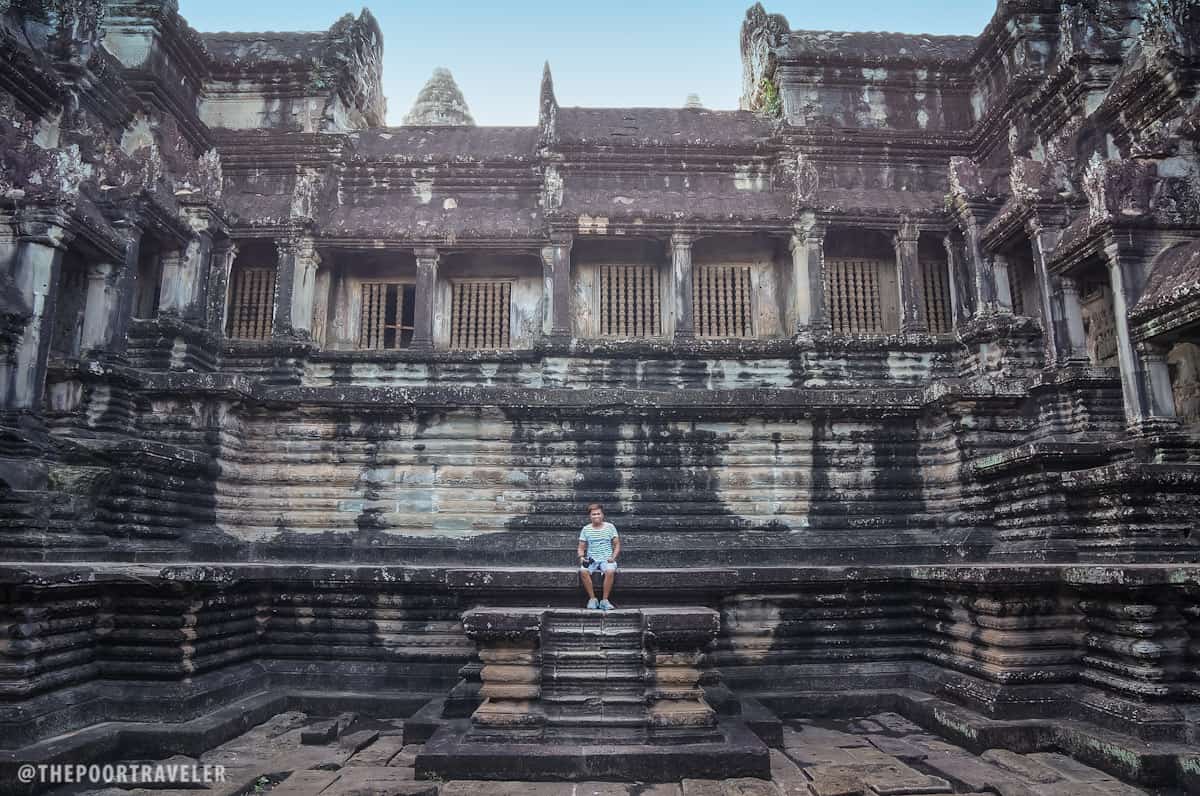
Exploring Angkor Wat: Layout and Architecture
Truth be told, yes, I was expecting a gigantic temple. What greeted me, however, was a gigantic temple complex. The plan of the site looked simple at first glance but its elaborateness combined with its vastness not only amazes but also disorients tourists, who will often find themselves picking up their jaws on the floor. The complex consists of the central tower, surrounded by three rectangular galleries, surrounded by an outer wall, surrounded by a moat. Confusing, eh?
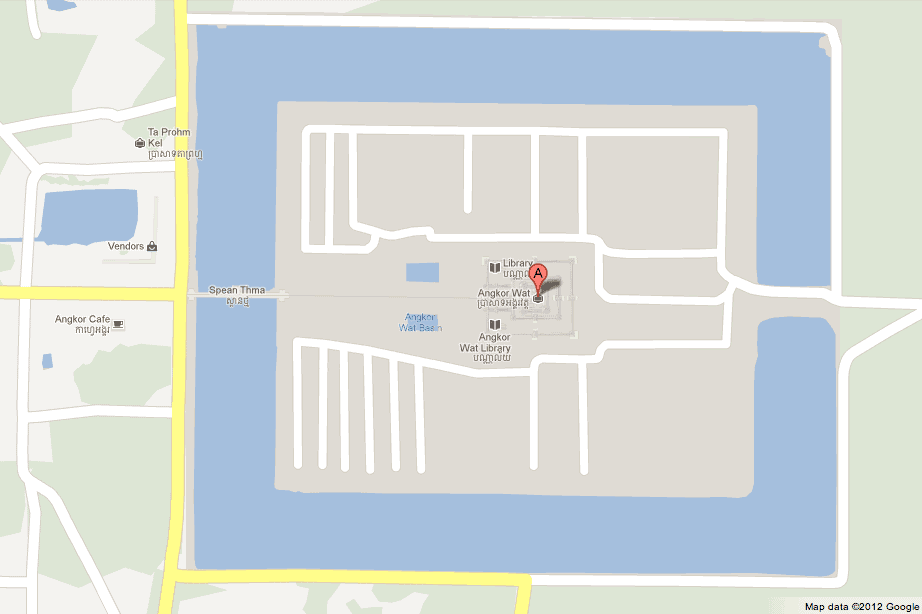
From the main entrance, a sandstone causeway extends over the moat, piercing through the outer wall, across courtyards, right to the center of the site. The courtyards are also peppered with several much smaller buildings (libraries). Ponds (basins) also cover some parts of the area.
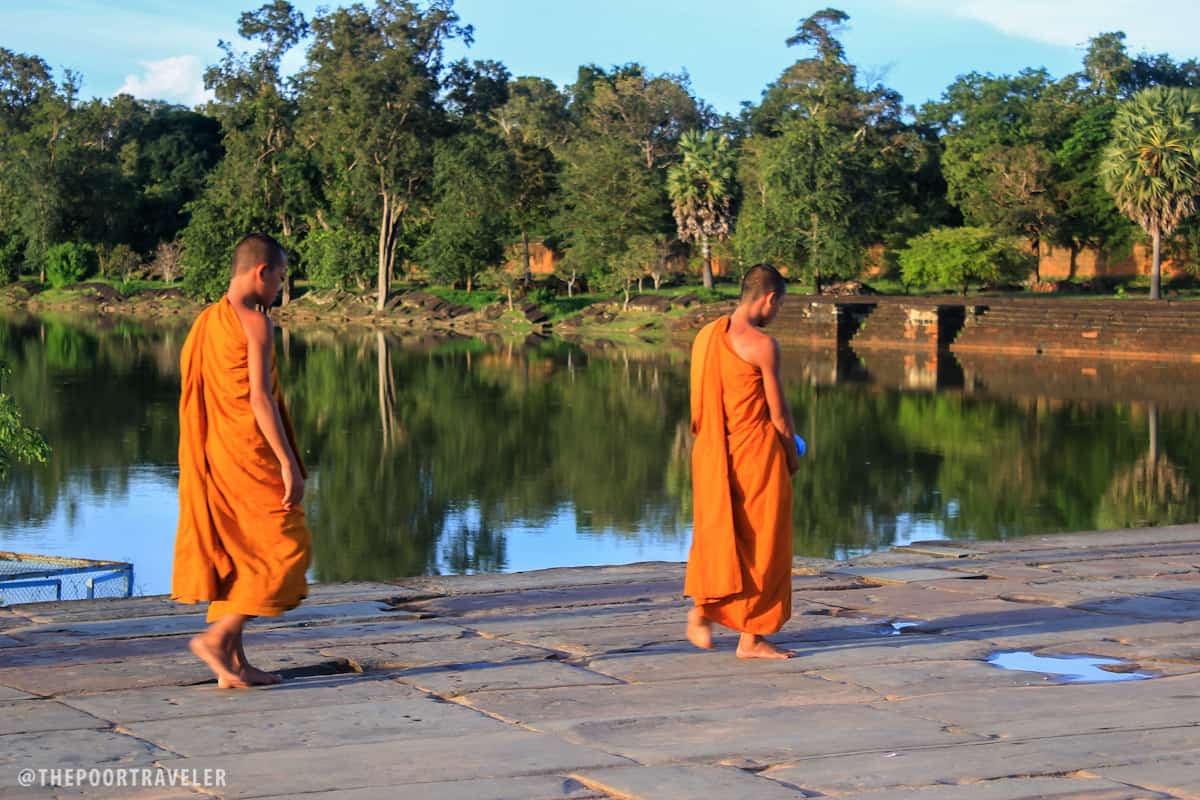
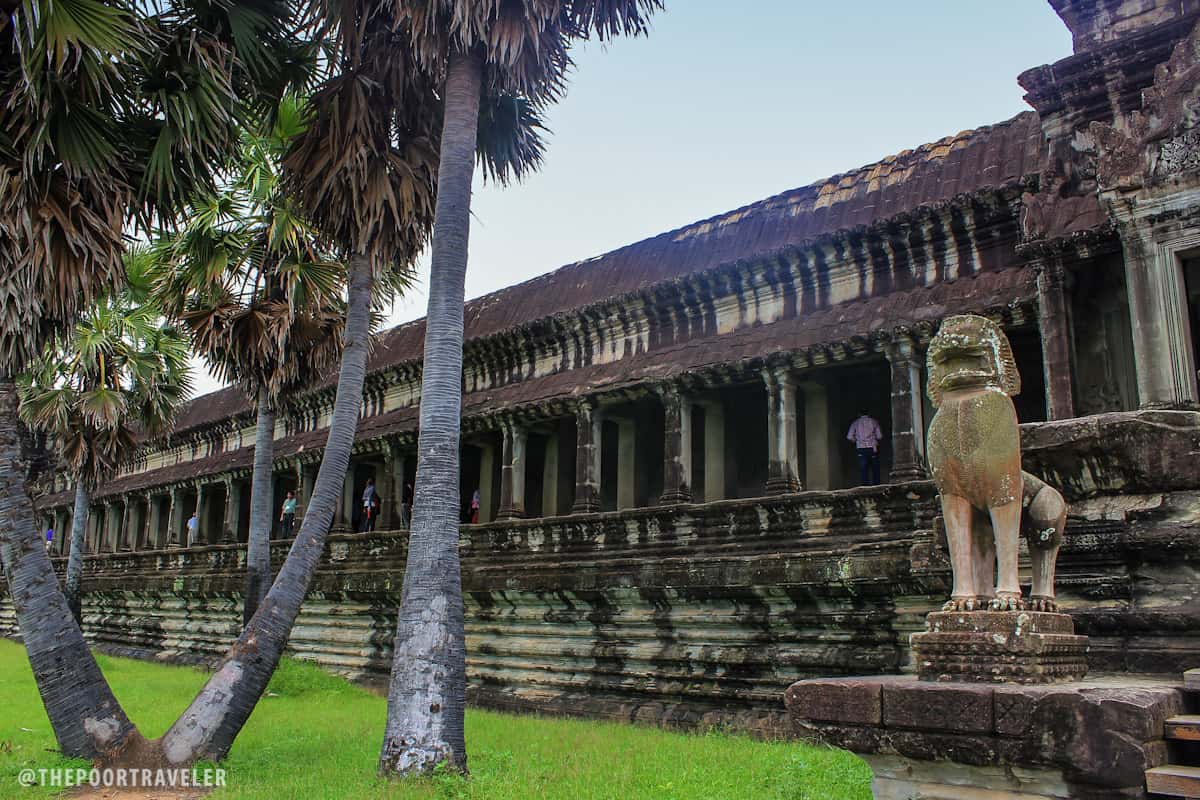
Stone lions flanking the mouth of the causeway were first to welcome me at the site. Tourists were already flooding the entrance so I decided to stay outside for a moment and watch the water that fronted the temple complex. While most medieval castles had moats as defense from enemy attacks, that of Angkor Wat’s must have served a different purpose. Some say it was just part of a more expansive system of canals that could have been used to regulate irrigation. The water here was so still during my visit that they mirrored the walls and the trees almost perfectly. The only disturbance was the lotus plants that thrived in its waters.
The walkway ends at the entry gate, part of the bordering outer buildings, topped with three towers. Their upper portions had already collapsed. From the outside, these front towers block the view of the central quincunx of towers. Once I made it past the gate, I walked on the causeway that stretched from the gate, cutting through a spacious courtyard that was carpeted by grass. To the left was a series of stores selling souvenirs, postcards, and drinks. The entrance to the galleries was fronted by a cross-shaped area known as the Terrace of Honor.
The galleries are divided into three layers (or levels) that are arranged to form rectangular borders. The levels rise considerably from the ground as you go inward and, of course, the upper levels are smaller. The lowest levels are roofed and colonnaded galleries featuring magnificent, intricate bas reliefs that depict scenes from religious, historical, and literary texts. These scenes are the following:
- North: Battle of Gods and Demons, Victory of Krishna
- East: Victory of Vishnu, Churning of the Ocean of Milk
- South: Heaven and Hell, The Grand Army
- West: Battle of Kurukshetra, Battle of Lanka
The bas reliefs caught me off-guard. I did not know about this part of the temple and I was mercilessly blown away by the tortuous carvings that crept on the walls. Of all the nooks and spots of the site, it was probably here at the outer galleries that I stayed the longest. I just couldn’t believe how they were able to etch such intricate yet delicate images and patterns on the solid wall on such a massive scale. I stood there with my mouth open, in utter awe the whole time.
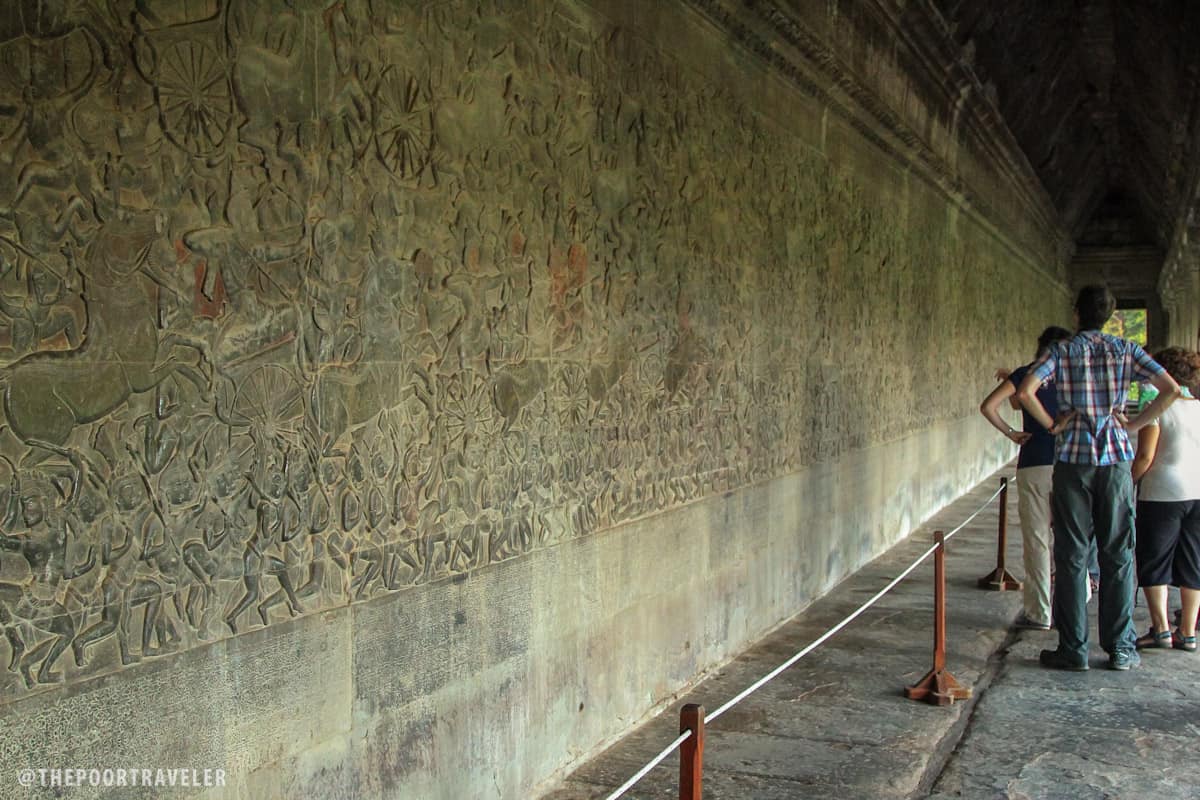
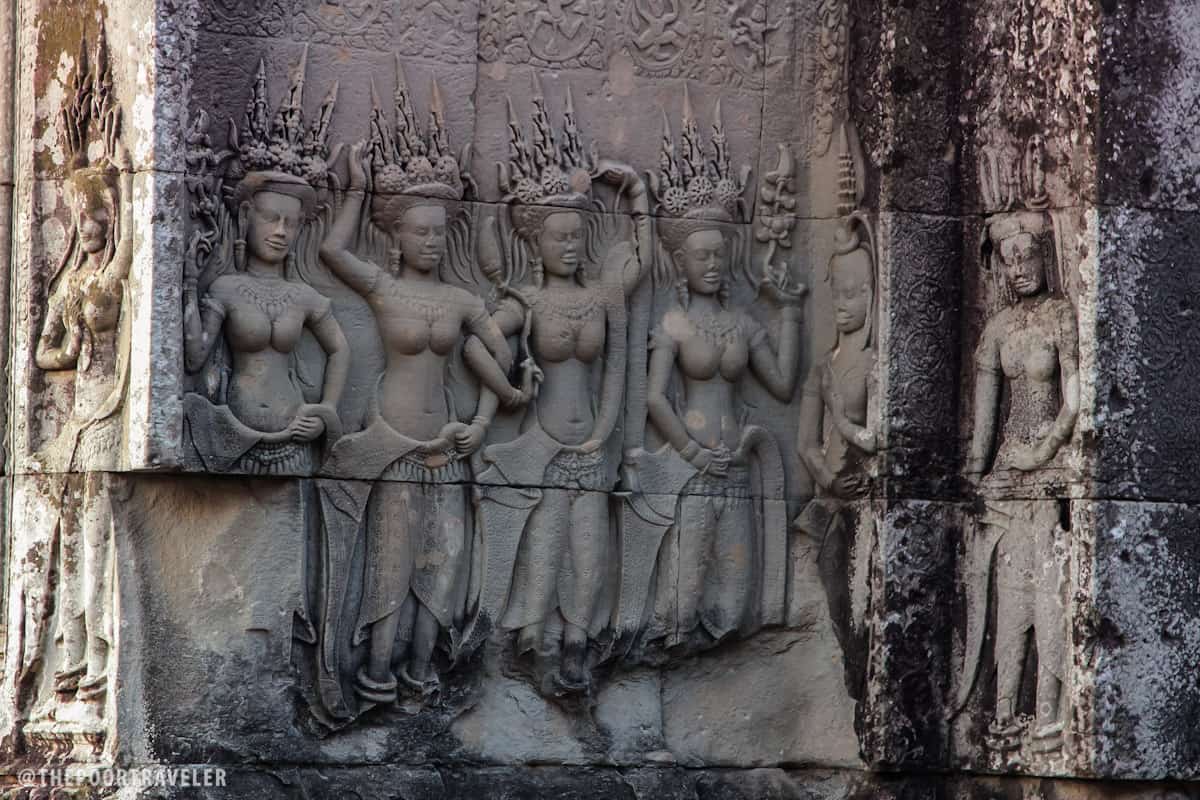
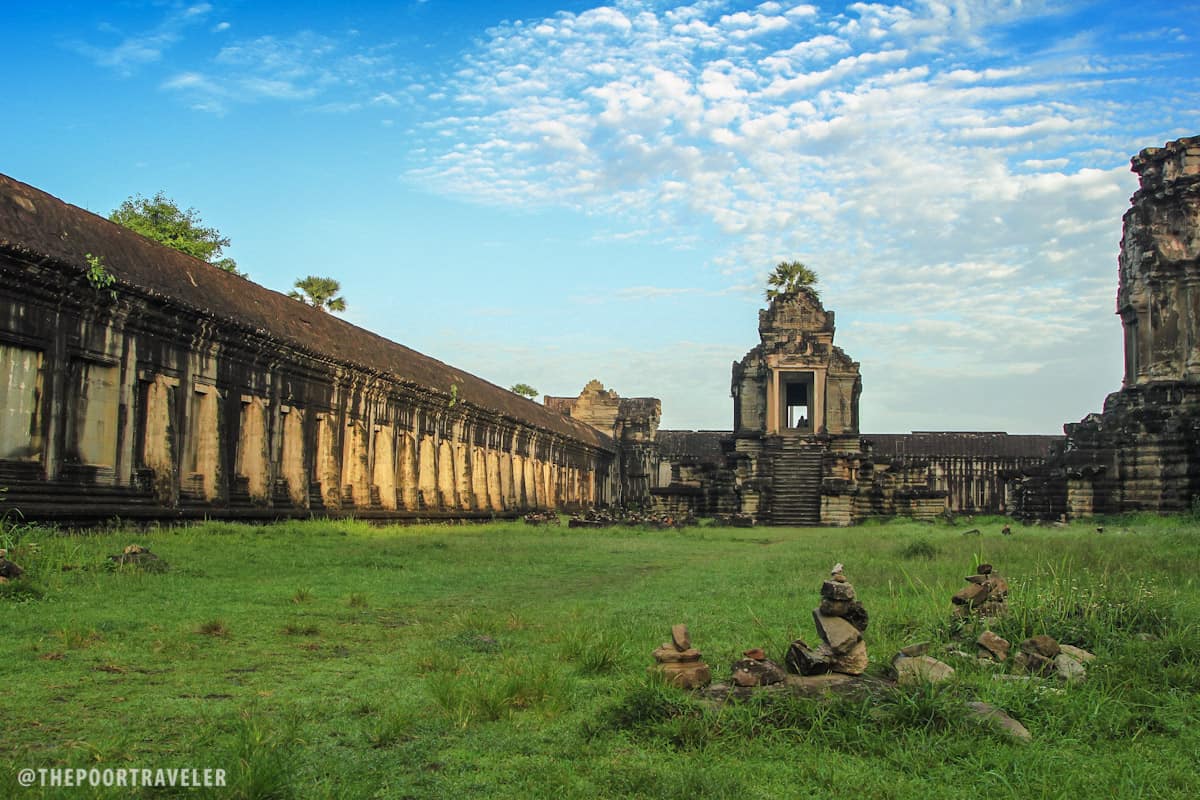
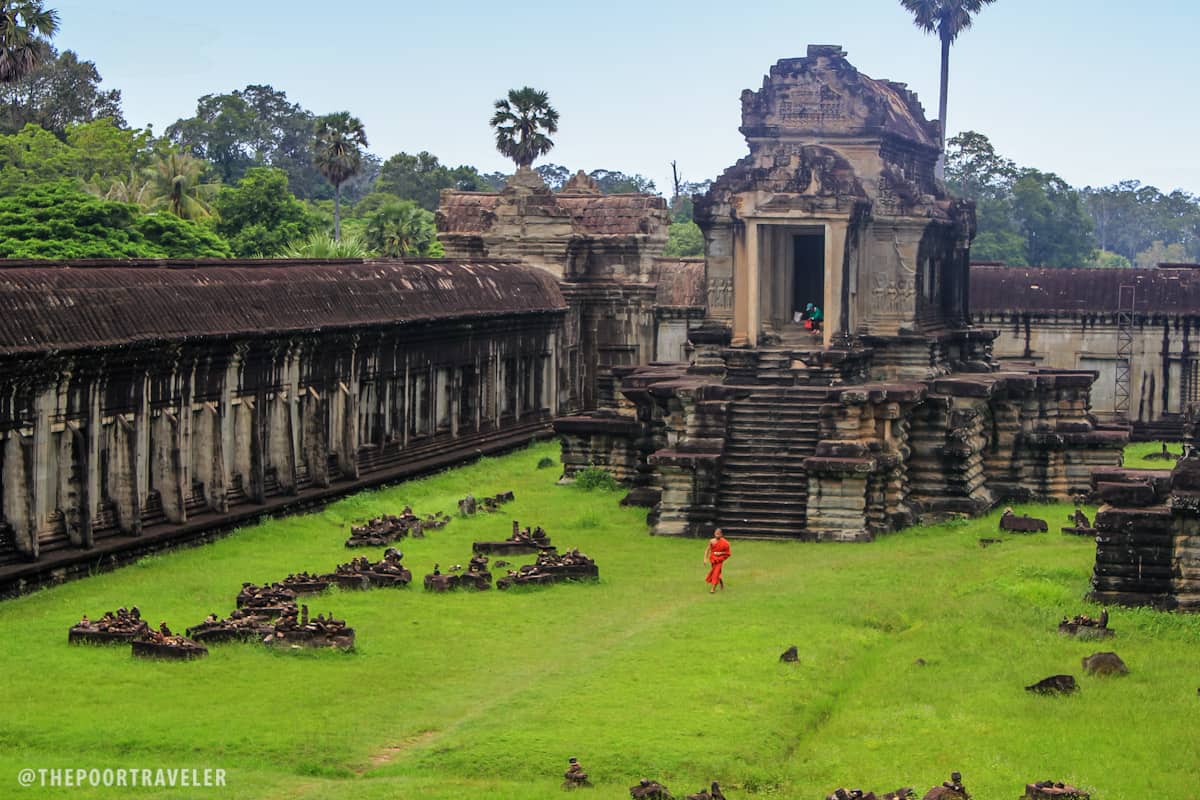
The topmost level is where the central temple is located. It is crowned with a quincunx of towers, the one at the center being the tallest, said to be as tall as the Notre Dame Cathedral in Paris. These multi-tiered towers take the form of stone lotus flowers that taper to the top like celestial pinecones. All these towers share the same base in the middle of a concrete courtyard of the upper level where most exhausted tourists choose to rest. Guests are allowed to climb the tallest tower provided that they are in good physical condition. There is a newly constructed staircase that visitors may use to reach the top. A word of caution, though — the flight is very steep, the steps small, and the height daunting. At the top, you’ll find two things: the most sacred image in the temple, and a spectacular view of Angkor!
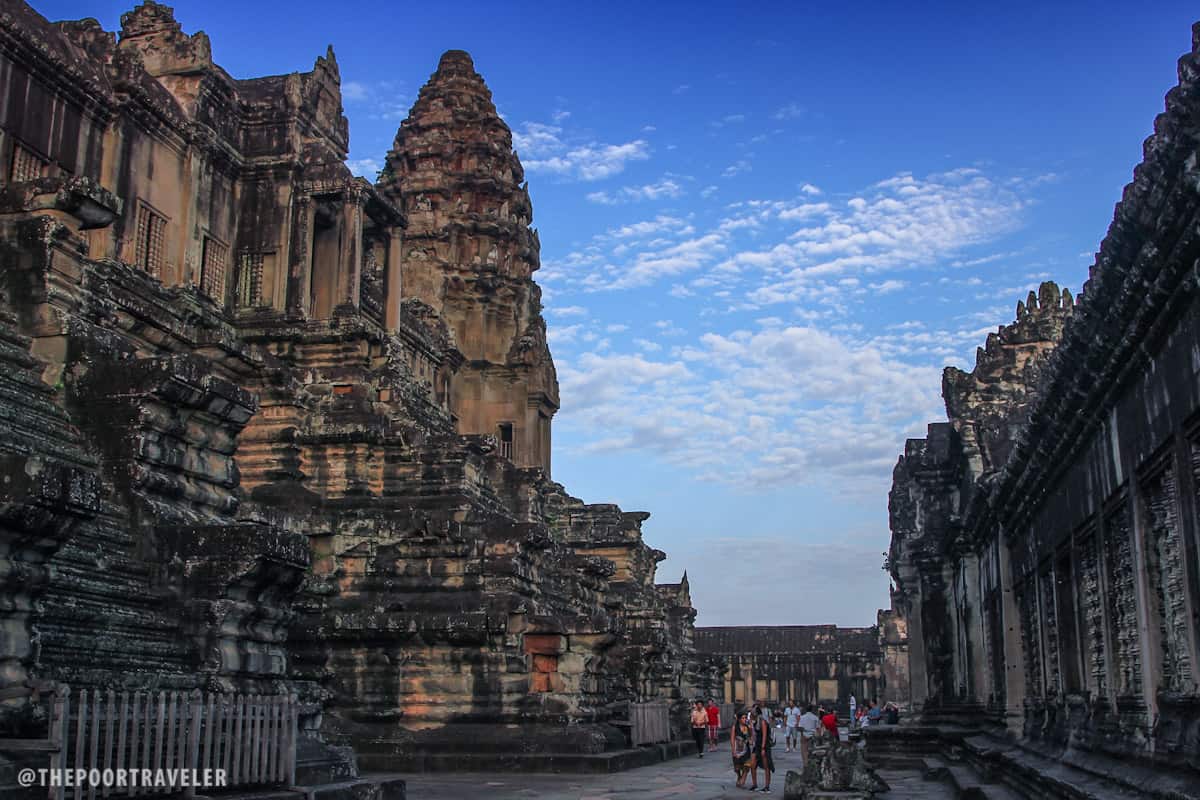
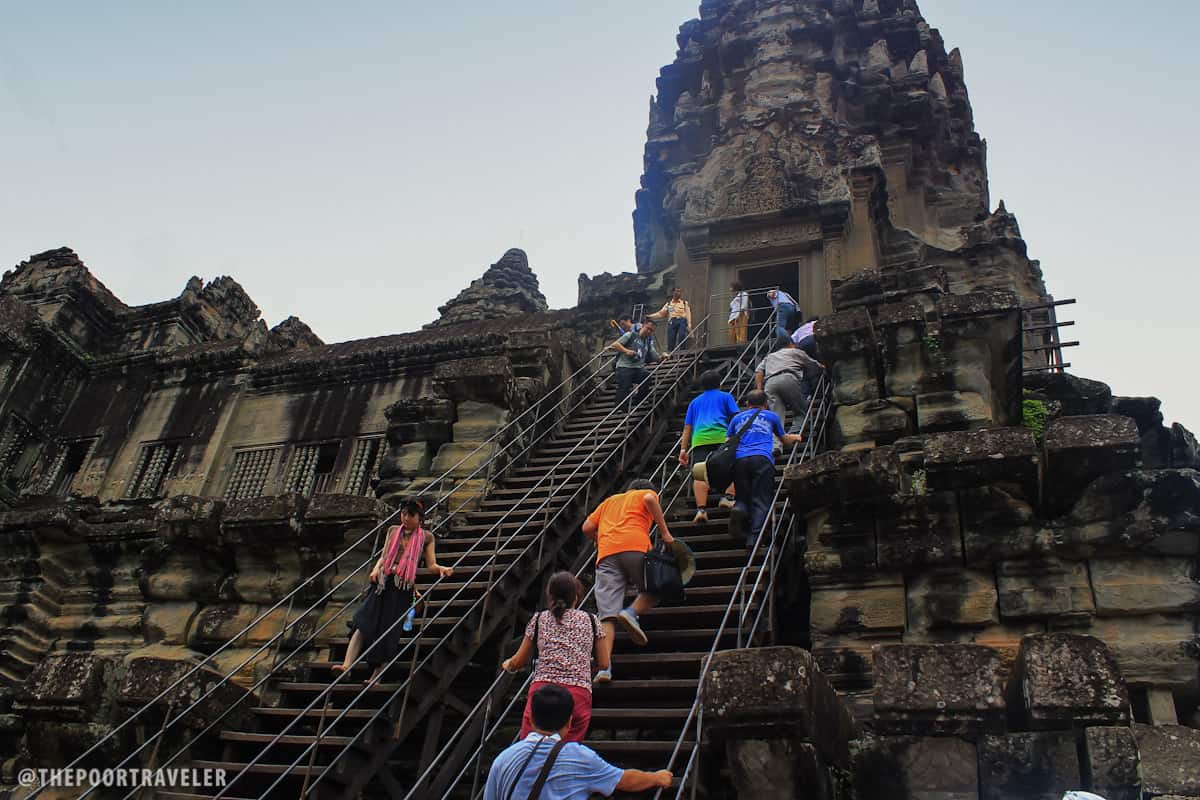
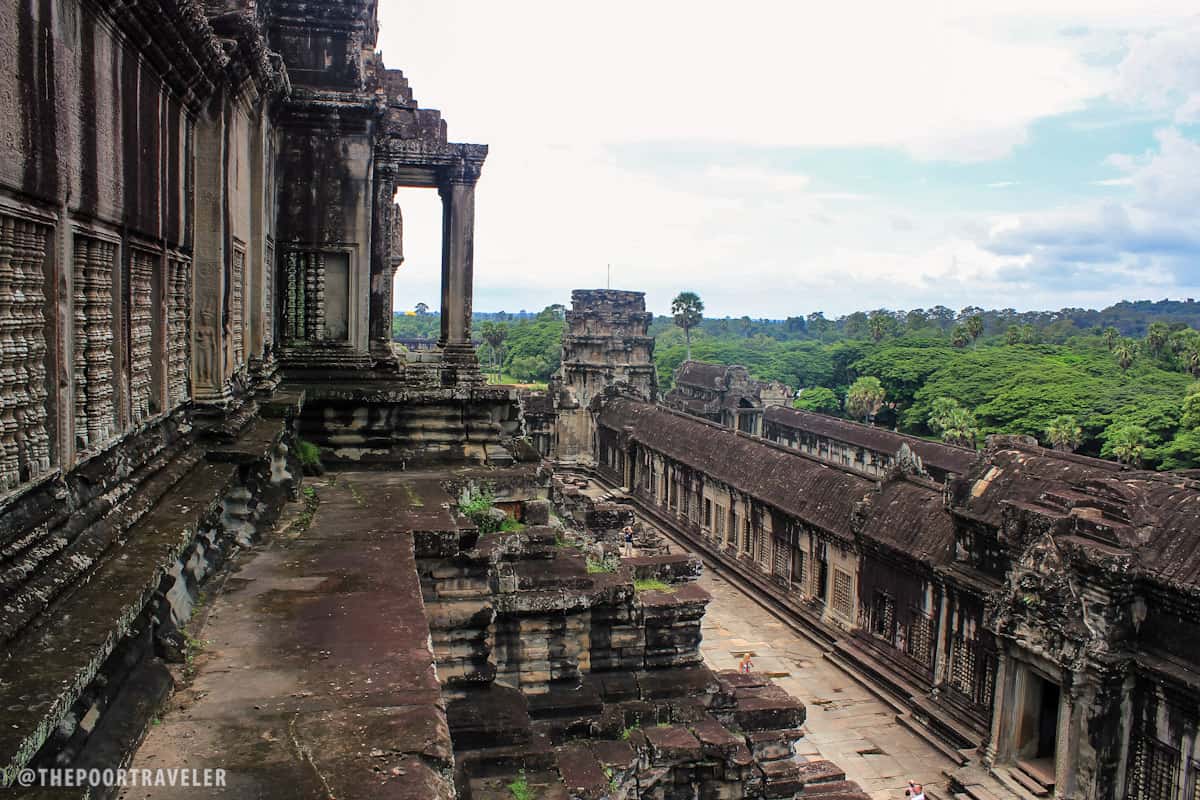
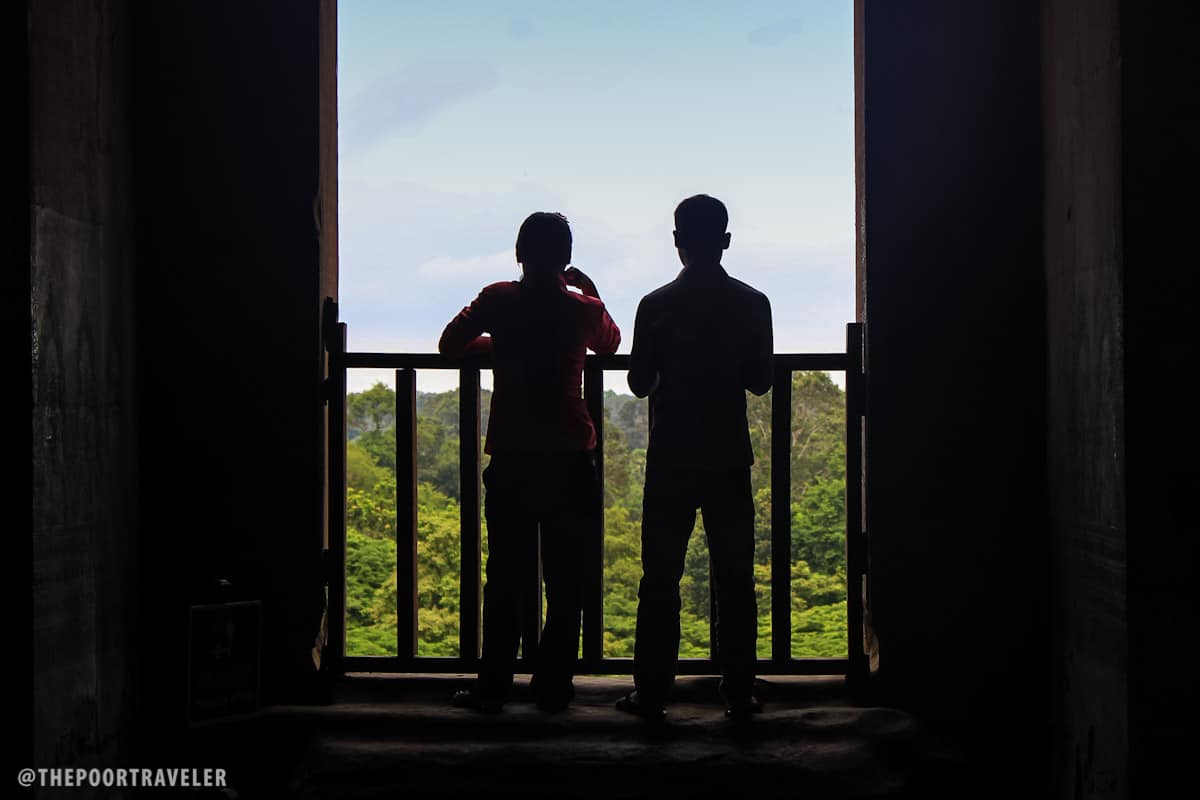
Angkor Wat is definitely a hundred times bigger than I expected. Considering that I decided against checking out the libraries and the other galleries due to time constraints, I still ended up completely drained out. Just walking around the site can be quite a test of stamina and sanity. The illustriousness, grandeur, significance, and the size of the site will surely blow your mind as it crushed mine. Indeed, no other man-made structure had made me feel so small.
How to get to Angkor Wat: From the city center of Siem Reap, hire a tuktuk for an Angkor Tour for only USD12. This will take you to three different temples at Angkor Archaeological Park including Angkor Wat. You can also rent a bike for USD1, then hit Vithei Charles de Gaulle, the main road to Angkor Wat. You’ll see the Ticket Office on your right. After getting a ticket, continue taking the same road. Turn left when you reach the moat, then turn right. You’ll see Angkor Wat immediately to your right.
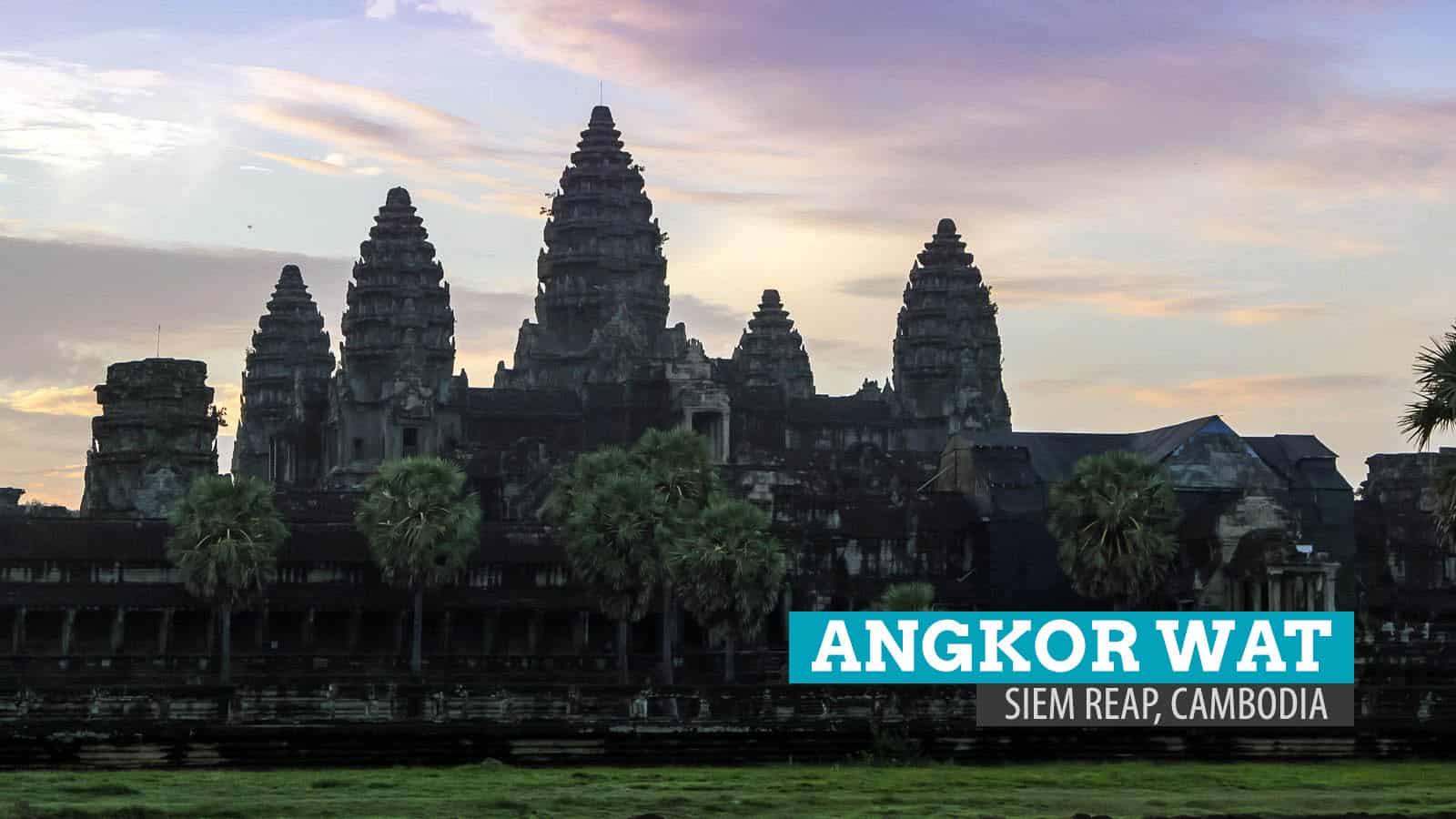
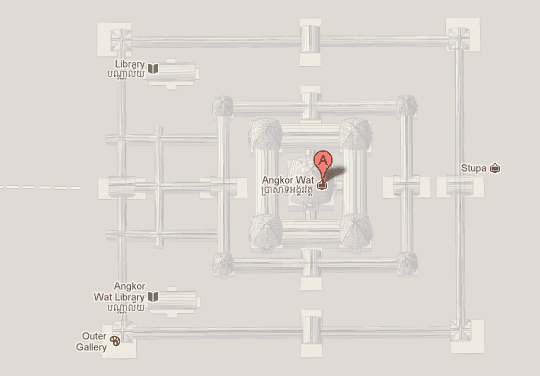






















Nice article and nice photos. It had been a dream of mine to see the Angkot Wat up close and I couldn’t be happier that it was fulfilled this year. You are correct in saying that it can be daunting. Could definitely be a test of one’s sanity. But let me tell you, I’d do it over and over again.
Yes!!! I actually visited it thrice in one trip. LOL. Couldn’t get enough!
Hi! Would be leaving for Siem Reap also in April with 5 of my friends. How much was your budget vs actual expenses in Siem Reap? Thank you.
Hi yinyin! Here it is: https://www.thepoortraveler.net/2013/01/siem-reap-cambodia-itinerary-budget-travel-guide/
This is very informative! :) my bf and I are going to Siem Reap in May 2018. It’s a shoestring budget kind of trip hehe so your articles are a perfect guide. :)
So If I understood it right, one is required to get a pass (eg. 1-day pass for $37) to enter the complex.
Joining a small group tour will cost you some amount on top of the $37 pass, right? Is it different from the $12 tuktuk ride/tour to Angkor Wat? :D
And if we rent a bike (is it bisikleta or motorbike?) w/c is for a small amount, will we be allowed to actually bike through the complex? Like inside the site?
Hehe sorry so many questions. I’ve been reading a lot, information overload and overwhelming. Hahaha I want this trip to be worth it! :)
Hope to hear from you soon :)
Hope to hear from you.
Hi Zab!
Joining a small group tour will cost you some amount on top of the $37 pass, right? Is it different from the $12 tuktuk ride/tour to Angkor Wat?
— YES to both questions.
And if we rent a bike (is it bisikleta or motorbike?) w/c is for a small amount, will we be allowed to actually bike through the complex? Like inside the site?
— YES, you can bike within the complex.
You’ll find more info here: https://www.thepoortraveler.net/2017/05/siem-reap-cambodia-travel-guide/
:)